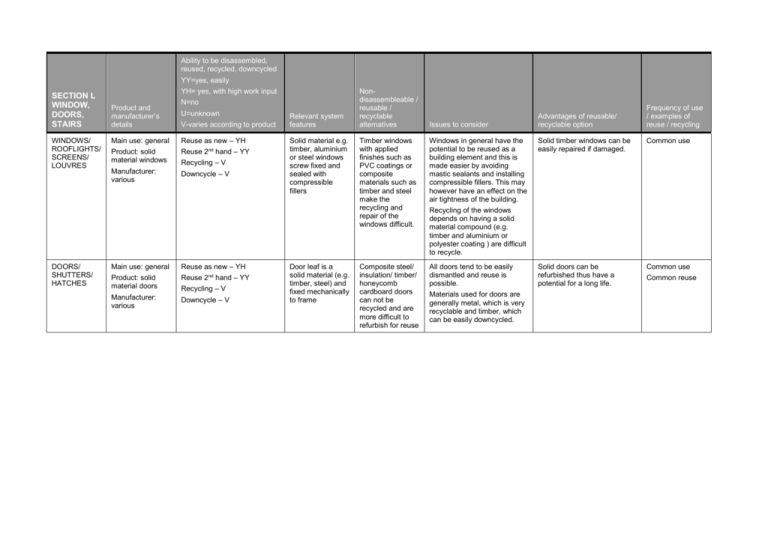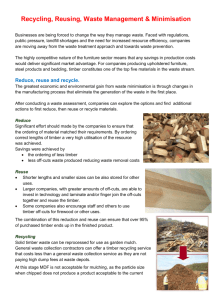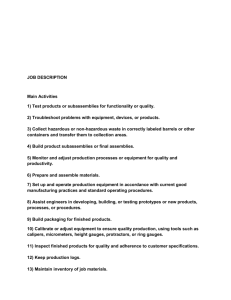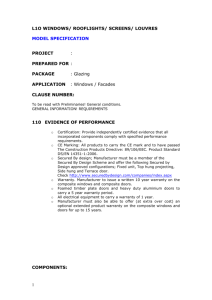NBS Section L - Windows / Doors / Stairs
advertisement

Ability to be disassembled, reused, recycled, downcycled YY=yes, easily SECTION L WINDOW, DOORS, STAIRS WINDOWS/ ROOFLIGHTS/ SCREENS/ LOUVRES DOORS/ SHUTTERS/ HATCHES YH= yes, with high work input Product and manufacturer’s details N=no U=unknown V-varies according to product Main use: general Reuse as new – YH Product: solid material windows Reuse 2nd hand – YY Manufacturer: various Downcycle – V Recycling – V Main use: general Reuse as new – YH Product: solid material doors Reuse 2nd hand – YY Manufacturer: various Downcycle – V Recycling – V Relevant system features Solid material e.g. timber, aluminium or steel windows screw fixed and sealed with compressible fillers Door leaf is a solid material (e.g. timber, steel) and fixed mechanically to frame Nondisassembleable / reusable / recyclable alternatives Issues to consider Timber windows with applied finishes such as PVC coatings or composite materials such as timber and steel make the recycling and repair of the windows difficult. Windows in general have the potential to be reused as a building element and this is made easier by avoiding mastic sealants and installing compressible fillers. This may however have an effect on the air tightness of the building. Composite steel/ insulation/ timber/ honeycomb cardboard doors can not be recycled and are more difficult to refurbish for reuse All doors tend to be easily dismantled and reuse is possible. Advantages of reusable/ recyclable option Frequency of use / examples of reuse / recycling Solid timber windows can be easily repaired if damaged. Common use Solid doors can be refurbished thus have a potential for a long life. Common use Recycling of the windows depends on having a solid material compound (e.g. timber and aluminium or polyester coating ) are difficult to recycle. Materials used for doors are generally metal, which is very recyclable and timber, which can be easily downcycled. Common reuse







